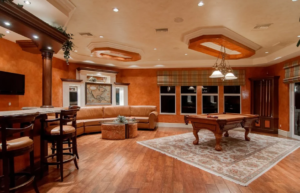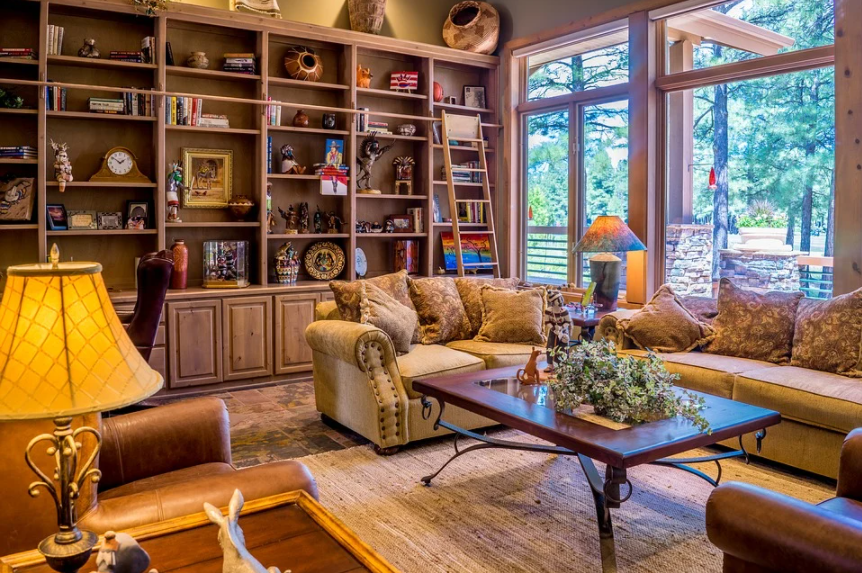Unlike other types of design, contemporary interior design is not a pattern layout. It is often used as a synonym for modern design, which will be a design movement with certain principles linked to a specific phase. It is about what is cool now. If you want to be specific, it can also be explained as a departure from the traditional design. Contemporary is seen as a fluid fashion that often breaks the rules rather than making them. The contemporary design borrows elements from different phases and styles to create a unique vision. You can visit AmazingInteriorDesign for more information.
The Essence of Contemporary Interior Design
 Although these similarities often lead to confusion between the two styles, contemporary design is much more welcoming and inviting than its modern counterpart. At a time when it’s difficult to pinpoint a modernized arrangement, you can isolate a layout that is characterized by its simplicity. Contemporary contrasts with a linear design and effortless ornamentation. But, you can add warmth and texture through natural fabrics, pops of subtle color, and curved shapes. In contemporary interiors, negative space can be considered a member of this strategy. Thus, an empty room can find work in addition to a stocked room.
Although these similarities often lead to confusion between the two styles, contemporary design is much more welcoming and inviting than its modern counterpart. At a time when it’s difficult to pinpoint a modernized arrangement, you can isolate a layout that is characterized by its simplicity. Contemporary contrasts with a linear design and effortless ornamentation. But, you can add warmth and texture through natural fabrics, pops of subtle color, and curved shapes. In contemporary interiors, negative space can be considered a member of this strategy. Thus, an empty room can find work in addition to a stocked room.
Colors and Fabrics
Neutral colors such as beige, white, cream, black, and gray are the foundation of modern design. Organic materials look prevalent in contemporary expanses. Linen, silk, cloth, and cotton offer character, warmth, and optical appeal. Bold fabrics are preferred, but you can still incorporate design by geometric and conceptual engravings in the form of ornamental pillows, rugs, or a throw. Providing layout solutions involves explicitly communicating ideas and effectively implementing instructions in a technically proficient manner using detailed drawings, specifications, applications, and mood boards.
Interior Furniture
 Refrain from the furniture with intricate divisions or excessive ornamentation. Keep the outlines elegant but substantial. Choose light wood tones and stains in colors such as cherry or walnut. Stainless steel, nickel, and chrome are popular, but shiny, gleaming aluminum, brass, and aluminum achieve the same effect when complementing visual warmth. Upholstered furniture should appear tailored as metallic finishes contrast with the natural colors of linen or rag. However, a large room with a lot of furniture can seem cold and impersonal.
Refrain from the furniture with intricate divisions or excessive ornamentation. Keep the outlines elegant but substantial. Choose light wood tones and stains in colors such as cherry or walnut. Stainless steel, nickel, and chrome are popular, but shiny, gleaming aluminum, brass, and aluminum achieve the same effect when complementing visual warmth. Upholstered furniture should appear tailored as metallic finishes contrast with the natural colors of linen or rag. However, a large room with a lot of furniture can seem cold and impersonal.
Lighting and Flooring
Floor coverings in modern interiors favor sophisticated finishes over carpeting. Natural stone tiles, gorgeous dark wood planks, or stained concrete floors are virtually as appropriate in the region as carpeting and rugs. Stay away from standard styles like orientals or overly feminine floral patterns. Design elements and eco-friendly materials are well-known in contemporary interior home design. Bamboo tile or recycled glass countertops are great options for existing architecture. Skylights can help reduce electricity consumption in the winter. More common are customizable features that fit a family’s needs.
Additional Information
Interior design companies go above and beyond what you might expect from an interior designer. Interior designers not only provide all the design services an interior designer can offer, but they go far beyond simply decorating and “beautifying” space. An interior designer sits down with a potential client to determine job selection. Interior designers may offer industrial and residential design alternatives, while some in specialized interior design markets may perform tasks that include simple industrial tasks such as offices, resorts, and restaurants. Other men and women provide services to large architectural firms that are willing to pay high salaries to artists.
